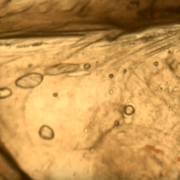Find the best fascia strength training program for baseball and softball hitters to improve power. Works for pitchers too! See how you can do these workouts and exercises for 11 and 12 year olds at home and in the off-season.
4 Tips On How To Train Springy Fascia
I frequently get questions on how to train springy fascia. The following 4 tips from Tom Myers, author of the book Anatomy Trains, will help shed light on how to do just that. The following videos are NO MORE THAN 2-mins long each. Enjoy!
Tip #1: Varying Vectors
- Includes tendons, ligaments, and fascial fabric of the body…not the same as training muscles and nerves.
- Vary the vectors – difference between working on gym machines v. Rope systems, throwing things, etc.
- Machines are good for rehabbing muscles, but don’t prepare you for life’s movement challenges.
How does this apply to hitters?

How to train springy fascia. Image is of fascia stretching. Photo courtesy: Tom Myers Anatomy Trains YouTube
Functional training in the weight room is great for this. Squatting, lunging, hip hinging, twisting, rolling, crawling, single leg hopping, single arm pressing, horizontal pushing, vertical pushing, horizontal pulling, vertical pulling.
Training on different planes: Sagittal, Frontal, and Transverse. Some of the best environments for varying training vectors are Parkour, American Ninja Warrior, Gymnastics, Martial Arts, Dance, Rock Climbing, Yoga, and Pilates.
A quick tip for training this when hitting would be to do the reverse strike zone drill, where the hitter has to swing at pitches outside the strike zone, and take anything in the zone.
Also, CLICK HERE for a great how to train springy fascia YouTube resource of exercises from David Weck at the WeckMethod using the Rotational Movement Club (RMT).
SCIENCE-BASED TRAINING:
Improve your hitting strategy dramatically by applying human movement principles.
Learn not only how and what to train but also the science behind the methods.
Tip #2: Lengthening (Stretch)
- If trying to lengthen fascia, then to be safe, lengthen slowly. Slow sustained stretching like you’d find in Yoga, this avoids damaging the fascia.
- Fascia isn’t well vasculated, meaning blood doesn’t move to and through fascia very well, so repair of fascial tears takes a lot of time to heal. Muscles regenerate after 90-days, but ligaments can take over 200-days!!
- If you want to stretch the fascia, then think Yoga or Tai Chi speeds. NOT athletic speeds.
How does this apply to hitters?
Studies show today’s athletes are sitting 80% of their day, so again, Gymnastics, Martial Arts, Dance, and Rock Climbing are great counter-balancers to this reality. Long slow stretching in the mid-split, front split, and stretching associated with handstand work are great for young athletes spending a lot of time with their bottom on a seat, and spilling their brain out on mobile devices developing “text neck”.
Tip #3: Hydration
- Most important that fascia gets hydrated…did you know your Achilles tendon is 63% water?
- Hydrating fascia IS NOT necessarily about how many bottles of water you drink.
- The question is, does water get to specific bottle-necked areas of fascial fabric in the body, such as the Achilles tendon. Hydration matters – where the water you drink gets to.
- “Squeezing the sponge” – big muscular effort helps this, Fascial rolling using a Self-Myofascial Release tool (SMR), self or professional massage, Rolfing.
How does this apply to hitters?
A couple things…
- Young athletes MUST drink water, how much? According to world renowned strength and conditioning Coach Charles Poliquin, take half their body-weight, add 30%, and drink that in ounces. A 100-lb player for example, 100-lbs/2 = 50 X 30% = 15 + the halved 50 = 65-ounces of water throughout the day (that’s about FIVE 12-ounce bottles of water).
- Remember, what matters is WHERE the water you drink gets to. The best speedy recovery principle to “squeeze the sponge”? Click for this post, “Speedy Recovery? Ice Bath Benefits Not What They Seem”, and
- CLICK HERE for a SMR foam rolling routine video I did a few years back.
Tip #4: Elasticity (Bounce)
- Stretch-shortening cycle – we stretch out the muscle to get it to contract (shorten). Fascia works the same way.
- We can encourage and cultivate elasticity in fascia. Elasticity is a property of youthful tissue. If baby falls down stairs, they bounce. Grandma falls down stairs, she doesn’t bounce.
- Ballistic stretching. Rhythmic motions such as running, jogging, jumping rope, etc…cultivate “bounce” within a 0.8 to 1.2 second stretch-shortening cycle. This is the opposite of Yoga and Tai Chi speeds.
How does this apply to hitters?
If you want the fascia to perform, then we have to do rhythmically bouncy movements where the stretch-shortening cycle lasts between 0.8 to 1.2 seconds. Running, jump rope, jogging, skipping, single leg hopping, etc.
I’m beginning to sharpen my thoughts on this as it pertains to the Catapult Loading System. I used to teach the hitter had an option to start in the CLS position, in the stance like Hunter Pence, then hold and maintain until stride landing. But now I’m reconditioning my hitters to do a later CLS move (during the forward momentum phase), and to bounce from that into the turn. Miggy, Trout, Khris Davis are great examples of this. As a matter of fact, most elite hitters you see using the CLS, time the move with a bounce into the turn.
What’s funny is, this post has been “bouncing” around in my head the past week (pun intended), and speak of the devil, my good golfing friend Lee Comeaux recently text me a new-to-me resource for training springy fascia. It’s called the Rotex Motion (YouTube channel). Some cool stuff there!




